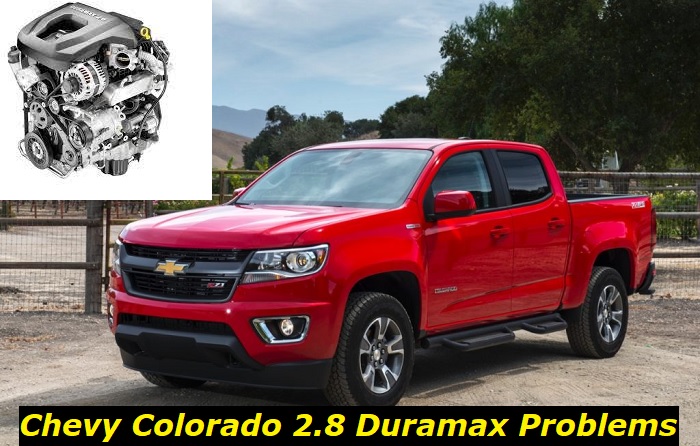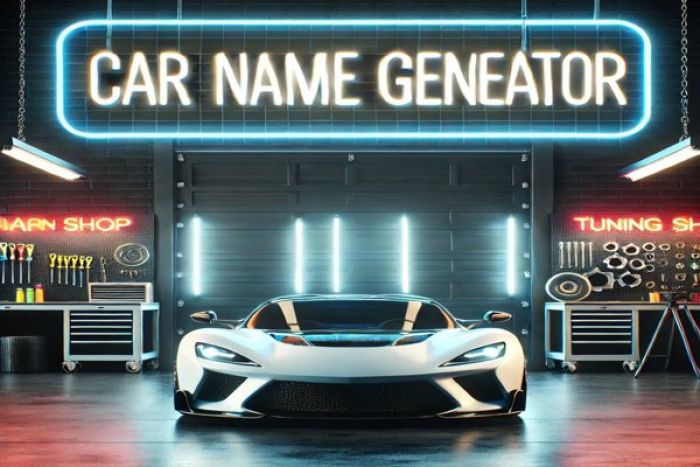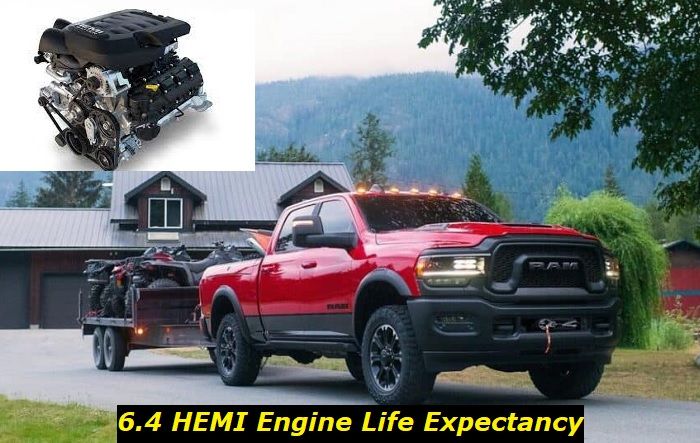GM's turbo-diesel four-cylinder engines are designed to deliver efficiency and capability. The 2.8L Duramax turbo-diesel that comes as one of the options in the Colorado is a member of this family. It has a variable-geometry turbocharger to achieve maximum power and efficiency across the entire rpm band. It also has a balance shaft for smooth running. Consider the 2.8-liter engine if you want an automatic transmission experience.
The 2.8L Duramax LWN was released in the United States in 2016. For the engine to be compliant with the strict pollution rules that were in place in North America, it was modified to include an enhanced exhaust gas recirculation (EGR) and after-treatment system.

The 2.8-liter Duramax engine generates 180 horsepower and 440 Nm of torque at 2,000 revolutions per minute. 11.4 seconds is the time it takes for this one to complete the century sprint. The engine was initially developed for trucks, but its application now includes vans. It utilizes innovative technology to deliver power while maintaining low fuel consumption.
Key features and my opinion about the engine
- Production years:2016-2022
- Average lifespan of LWN:190,000-220,000 miles
- Fuel supply type:Common Rail
- Power range:181 hp
- Fuel efficiency:good
- Engine block material:cast-iron
- Engine reliability score:medium
- The most common problems:turbocharger problems, fuel pump issues, problems with towing, minor issues.
Engine Longevity
When it comes to the engine's lifespan, the key to getting the most out of it is to regularly perform routine maintenance on your vehicle. Suppose you do not put off necessary maintenance on your vehicle, including tune-ups and oil changes; it will have a much better chance of lasting for an extended period.
Pickup trucks have been shining examples of longevity in the automobile industry for many years. Trucks like the Chevrolet Colorado are among those that have a well-deserved reputation for their ability to retain their pristine state for a considerable amount of time.
The average longevity span of the Chevrolet Colorado 2.8L engine is about 220,000 to 320,000 miles. Attaining this average mile out of your Chevrolet Colorado should not be too difficult for you. To keep your Colorado on the road, you won't need to spend a fortune on maintenance and repairs. Adhering to the management plan will prevent problems and guarantee that your car will always perform without a hitch.
If you want to purchase a used Chevrolet Colorado, you should ensure the seller provides you with a detailed automobile history. There is a possibility that a used Chevrolet Colorado could make it beyond 200,000 miles. However, its condition is still highly dependent on the amount of maintenance it receives.
Suppose the previous owner did not perform comprehensive and routine maintenance on the vehicle; there is a possibility that it may start having difficulties and eventually break down before it reaches 250,000 miles. The following preventive maintenance procedures are to get the vehicles to and beyond the 220,000- 320,000 mile mark include:
- Transmission flushing
- Oil and fluid replacement
- Filter replacement
Engine Problems
The Chevrolet Colorado 2.8L LWN engine is not without its problems. Though it is built for improved efficiency, some of the issues you are likely to experience with the engine include:
- Clogged injectors and Carbon deposit
- Failed Turbocharger
- Poor Towing Capacity
- Timing Belt Problem
Clogged Injectors and Carbon deposit
Engines that use direct injection are currently the design that is favored by the majority of manufacturers of vehicles. It is not hard to determine why this is the case, given that design can boost lower fuel consumption and engine performance and cut exhaust emissions.
Carbon build-up in the intake manifold and clogged injectors were two problems that were not typical of port-injected engines; yet, both issues were caused by the design of the engine.
Carbon deposits from the exhaust gases slowly build up in the intake port and vehicle valves. In addition, because the injectors are placed on top of the engine cylinder for more accurate fuel injection, they are subjected to intense carbon accumulation from the combustion process. Over time, the build-up clogs the injectors' nozzles, making the fuel injection less effective.
Some signs that signify carbon accumulation and clogged injectors include:
- Heavy exhaust emissions
- Engine misfire
- Slow acceleration
- Reduced fuel efficiency
- Crank without start
- Reduced engine performance
Carbon build-up and clogged injectors are both avoidable problems with the use of fuel additives. Lubricity is provided by the additives, which prevent the deposit accumulation on the injector. The most efficient method for avoiding carbon accumulation in the intake manifold is installing an oil catch or performing walnut blasting techniques.
If you have to deal with carbon and other types of deposits in a diesel engine, it will cost you a fortune. Replacing the injectors will just tear your budget apart. So, good maintenance is the key to success with a Duramax engine.
Failed Turbocharger
A turbocharger with variable geometry is incorporated onto the engine. Due to its compact size, the turbocharger spins up quickly and generates a significant amount of power for the vehicle. The vanes in the turbocharger are moved in response to input from a rod connected to an external control module. In a situation where there is less load on the engine, the vanes are typically open, but they close when there is a need for greater power to enhance engine power and create high pressure.
Despite the turbocharger's setup being effective, the system has occasionally suffered catastrophic failures. The turbocharger has been the subject of several complaints over its inability to function appropriately in freezing or cold temperatures, most of which have been attributed to bent fins. The signs of a failed turbocharger in the engine are not limited to:
- Reduced fuel economy
- No boost
- A loud whistle or whine coming from the turbo
- Power loss
- Damage to the compressor wheel inducer.
You can prevent the premature failure of your turbocharger by:
- Regularly replacing the cold air intake filter
- Monitoring the engine performance
- Oil changes
- Performing a boost test on your truck each time you change the oil
- Inspecting the turbocharger during each oil change
Timing Belt Problem
The engine has dual camshafts. It drives a timing belt that powers the water pump. Due to its lower noise production, more compact packaging, and easier maintenance, a timing belt was utilized instead of a timing chain.
It was expected that the belt would need to be serviced once every 150,000 miles. Even though the belt should last longer than the manufacturer's recommended replacement period, it is still a good idea to get it replaced once it has been driven for 100,000 miles.
The 2.8L Duramax has its timing belt located at the front of the engine, and the only component you might have to take off is the radiator assembly to replace it. Its location makes the process of replacing it significantly simpler.
Poor Towing Capacity
When purchasing a pickup truck, the vehicle's towing capacity is one of the essential considerations. If you need to transport something that weighs more than 8,000 pounds, the 2.8L engine cannot impress you.
Therefore, the functionality of this engine is restricted to only being suitable for commuting and carrying not-so-heavy weights. So, it should be no surprise that pickup vehicles equipped with the 2.8L Duramax diesel engine will be ideal for light weights.
Specs of the 2.8-liter Duramax
The Chevrolet 2.8L Duramax LWN turbo diesel engine is available on select rims and is accompanied by a six-speed automatic transmission, and can be equipped with 4WD or RWD. An important benefit you stand to enjoy is a smooth low-end torque which is perfect for off-road adventures and heavy hauls.
The engine offers a payload capacity of 2,200 pounds max and a regular towing capacity of over 7K pounds. The 2.8L Duramax turbo diesel engine gives decent fuel economy, towing capacity, and torque in the Colorado family.
On these trucks, a direct fuel injection system (common-rail system by Denso) is used. This makes the fuel economy even better and it also improves the overall efficiency and power of the unit. You may have noticed how easily they move and how quiet they are if you've driven one or been around one.
Conclusion
The Chevrolet Colorado 2.8L engine promises an efficient and smooth performance. Given their offerings' potency, the vehicle has maintained its position as the unrivaled leader in the diesel engine market. Now that you know the common problems you can experience with the engines, you can decide on the acquisition of the vehicle.
It should not surprise you that the advantages of possessing such a powerful diesel engine greatly outweigh any potential negatives it may have. You should ensure the engine receives the necessary maintenance to maintain it in the optimal operating conditions for it to continue performing correctly. Doing this will enable you to enjoy additional miles to the engine's life span.
About the authors
The CarAraC research team is composed of seasoned auto mechanics and automotive industry professionals, including individuals with advanced degrees and certifications in their field. Our team members boast prestigious credentials, reflecting their extensive knowledge and skills. These qualifications include: IMI: Institute of the Motor Industry, ASE-Certified Master Automobile Technicians; Coventry University, Graduate of MA in Automotive Journalism; Politecnico di Torino, Italy, MS Automotive Engineering; Ss. Cyril and Methodius University in Skopje, Mechanical University in Skopje; TOC Automotive College; DHA Suffa University, Department of Mechanical Engineering






Add comment